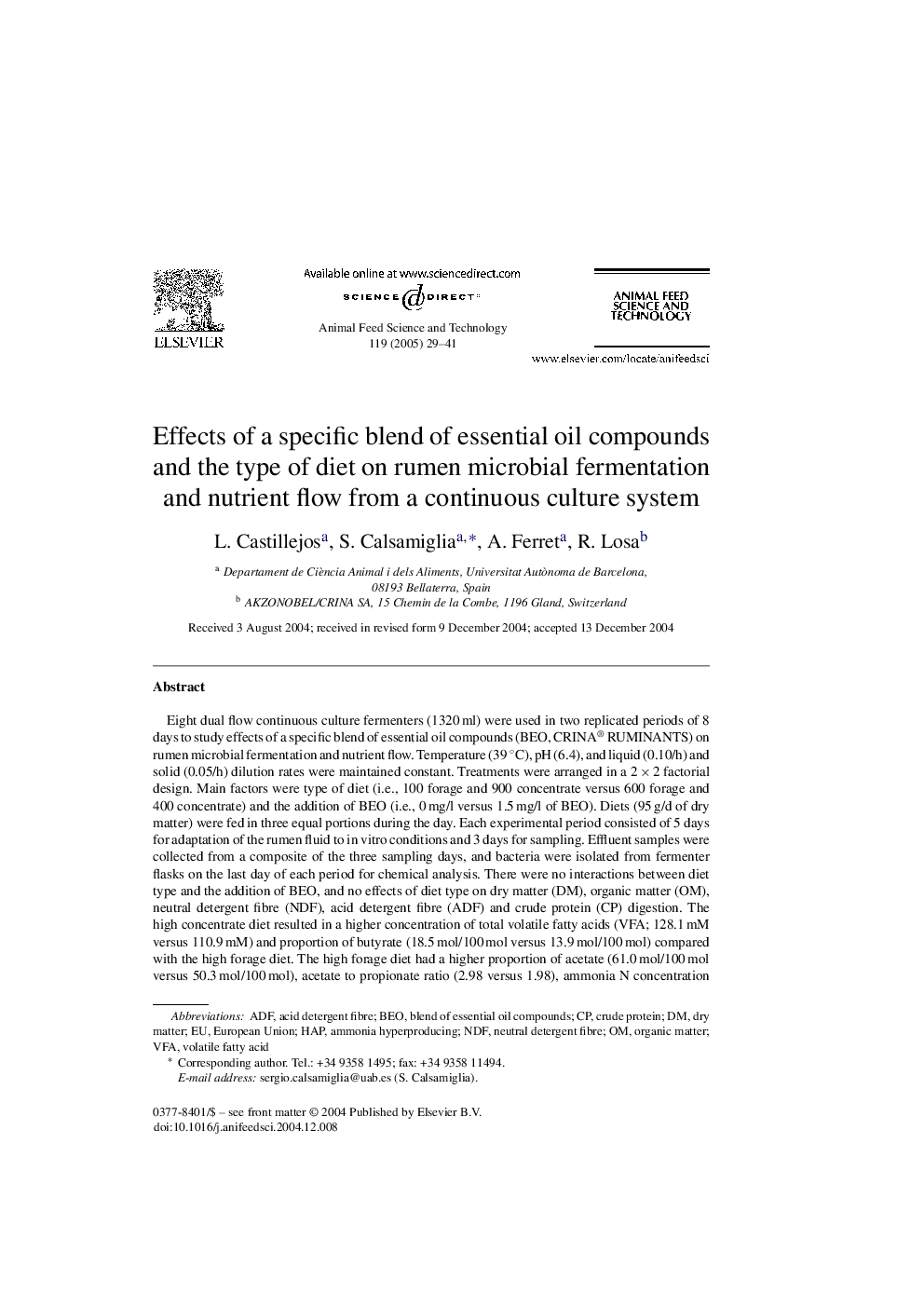| Article ID | Journal | Published Year | Pages | File Type |
|---|---|---|---|---|
| 8973892 | Animal Feed Science and Technology | 2005 | 13 Pages |
Abstract
Eight dual flow continuous culture fermenters (1320 ml) were used in two replicated periods of 8 days to study effects of a specific blend of essential oil compounds (BEO, CRINA® RUMINANTS) on rumen microbial fermentation and nutrient flow. Temperature (39 °C), pH (6.4), and liquid (0.10/h) and solid (0.05/h) dilution rates were maintained constant. Treatments were arranged in a 2 Ã 2 factorial design. Main factors were type of diet (i.e., 100 forage and 900 concentrate versus 600 forage and 400 concentrate) and the addition of BEO (i.e., 0 mg/l versus 1.5 mg/l of BEO). Diets (95 g/d of dry matter) were fed in three equal portions during the day. Each experimental period consisted of 5 days for adaptation of the rumen fluid to in vitro conditions and 3 days for sampling. Effluent samples were collected from a composite of the three sampling days, and bacteria were isolated from fermenter flasks on the last day of each period for chemical analysis. There were no interactions between diet type and the addition of BEO, and no effects of diet type on dry matter (DM), organic matter (OM), neutral detergent fibre (NDF), acid detergent fibre (ADF) and crude protein (CP) digestion. The high concentrate diet resulted in a higher concentration of total volatile fatty acids (VFA; 128.1 mM versus 110.9 mM) and proportion of butyrate (18.5 mol/100 mol versus 13.9 mol/100 mol) compared with the high forage diet. The high forage diet had a higher proportion of acetate (61.0 mol/100 mol versus 50.3 mol/100 mol), acetate to propionate ratio (2.98 versus 1.98), ammonia N concentration (8.64 mg/100 ml versus 3.01 mg/100 ml), total N flow (3.57 g/d versus 3.26 g/d), ammonia N flow (0.27 g/d versus 0.10 g/d) and non-ammonia N flow (3.30 g/d versus 3.17 g/d) compared with the high concentrate diet. There were no effects of BEO on DM, OM, NDF, ADF and CP digestion, but BEO increased the concentration of total VFA (122.8 mM versus 116.2 mM) without affecting individual VFA proportions or N metabolism. Further research is required to determine the effect of dose of BEO, and adaptation time to the addition of BEO, on N metabolism of rumen microorganisms.
Keywords
Related Topics
Life Sciences
Agricultural and Biological Sciences
Animal Science and Zoology
Authors
L. Castillejos, S. Calsamiglia, A. Ferret, R. Losa,
